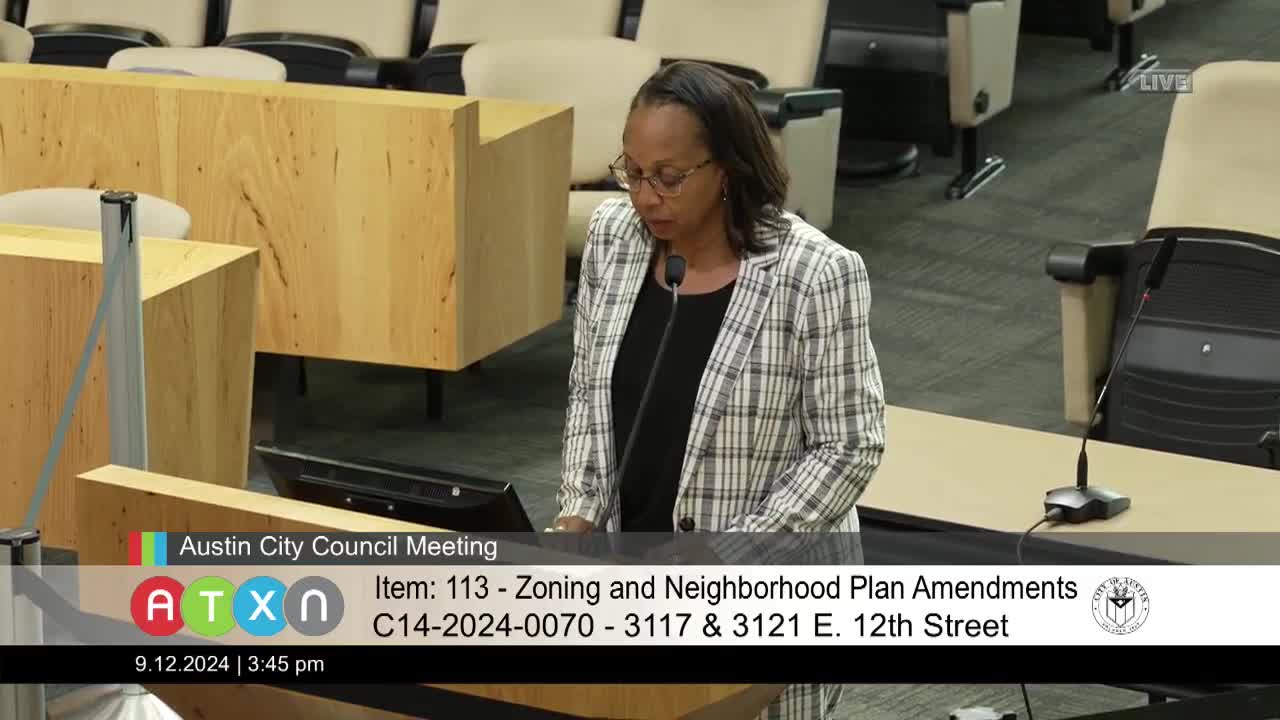Zoning Battle Erupts Over Controversial Mixed-Use Development
September 12, 2024 | Austin, Travis County, Texas
This article was created by AI summarizing key points discussed. AI makes mistakes, so for full details and context, please refer to the video of the full meeting. Please report any errors so we can fix them. Report an error »

In a recent government meeting, city officials discussed a zoning request for a 1-acre parcel near the Capital Metro Rail Station, aimed at facilitating a mixed-use development with approximately 90 multifamily residential units. The request, submitted by CSMUV, seeks to change the zoning to DB 90, following the invalidation of the previously approved VMU 2 ordinance.
City staff recommended granting the new zoning, emphasizing that it would promote affordable housing and employment opportunities close to public transit. The site is strategically located along a major roadway and is within proximity to various transportation options, which aligns with the city’s goals for transit-oriented development.
The applicant, represented by Michael Weyhahn, highlighted that the project would include 12% of units designated as affordable at 60% of the median family income (MFI). They also committed to maintaining previously negotiated conditions, such as limiting impervious cover to 90% and capping building heights at 80 feet through a private restrictive covenant with a local nonprofit.
However, the proposal faced significant opposition from community members and neighborhood associations. Critics argued that the development would exacerbate existing traffic issues and lead to the displacement of current residents. They expressed concerns that the increase in building capacity—nearly 97%—would not correspond with a meaningful increase in affordable housing, questioning the adequacy of the proposed community benefits.
Opponents also pointed out that the Planning Commission did not recommend the zoning change, indicating a lack of community support. They argued that the project does not align with the neighborhood's character and that the proposed affordable units would not adequately address the needs of low-income families in the area.
As the meeting progressed, the council members engaged in a detailed discussion about the implications of the zoning change, the legal framework surrounding conditional overlays, and the potential impact on the community. The outcome of this zoning request remains uncertain as further deliberations are expected.
City staff recommended granting the new zoning, emphasizing that it would promote affordable housing and employment opportunities close to public transit. The site is strategically located along a major roadway and is within proximity to various transportation options, which aligns with the city’s goals for transit-oriented development.
The applicant, represented by Michael Weyhahn, highlighted that the project would include 12% of units designated as affordable at 60% of the median family income (MFI). They also committed to maintaining previously negotiated conditions, such as limiting impervious cover to 90% and capping building heights at 80 feet through a private restrictive covenant with a local nonprofit.
However, the proposal faced significant opposition from community members and neighborhood associations. Critics argued that the development would exacerbate existing traffic issues and lead to the displacement of current residents. They expressed concerns that the increase in building capacity—nearly 97%—would not correspond with a meaningful increase in affordable housing, questioning the adequacy of the proposed community benefits.
Opponents also pointed out that the Planning Commission did not recommend the zoning change, indicating a lack of community support. They argued that the project does not align with the neighborhood's character and that the proposed affordable units would not adequately address the needs of low-income families in the area.
As the meeting progressed, the council members engaged in a detailed discussion about the implications of the zoning change, the legal framework surrounding conditional overlays, and the potential impact on the community. The outcome of this zoning request remains uncertain as further deliberations are expected.
View full meeting
This article is based on a recent meeting—watch the full video and explore the complete transcript for deeper insights into the discussion.
View full meeting
